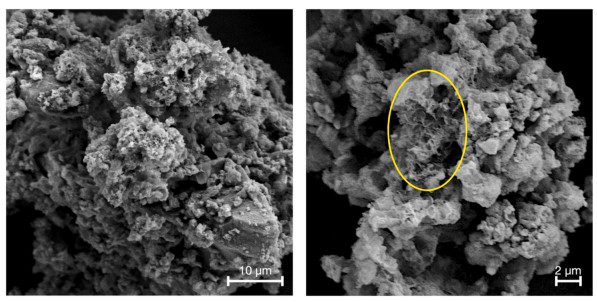Reactivity of raw, pyroprocessed and GGBS-blended alum sludge (AS) waste for sustainable cement production

This paper investigates AS waste to produce a construction binder of low environmental impact. It studies the reactivity of AS so that it can be used instead of traditional (higher impact) binders.
Currently, most construction binders are Portland cement (PC) based, hence carrying a major environmental impact. Significant impact can be offset by using wastes as binders. Alum sludge (AS) waste is massively produced in drinking water plants, and its primary component is aluminium hydroxide (Al(OH)3). Both the raw and the calcined AS exhibit pozzolanic activity measured by the Chapelle test. The organic matter in raw AS inhibits pozzolanic reaction and hydrate formation, hence the raw AS specimens display low strength. Calcination removed the organic matter and induced the dehydroxylation of Al tetrahedra thereby increasing the pozzolanic activity of AS.
The AS burned at 450 and 600 ◦C shows excessive reactivity which results in a flash set. However, at 800 ◦C, some amorphous Al(OH)3 transforms into semi-amorphous γ-Al2O3 avoiding flash set and allowing handling while maintaining significant reactivity that yields substantial strength. At 1000 ◦C, the conversion of amorphous Al(OH)3 into inert corundum significantly lowers reactivity. Therefore, pyroprocessing AS at 800 ◦C produces material of high reactivity: abundant calcium aluminate hydrates were evident in the pastes due to pozzolanic reaction and secondary hydration involving CO3 2− ions. Replacing 50% 800◦C-AS with GGBS enhances strength and avoids strength reduction (caused by the conversion of carbonate AFm phases to Si-rich AFm phases, possibly stratlingite).
A blend of 800◦C-calcined AS and GGBS, in a lime or PC system, renders workable setting times and a high ultimate strength. Calcination is the key parameter affecting AS as binder replacement. When incorporated into lime or PC systems, improper calcination may cause problems such as flash setting and a strength reduction.
